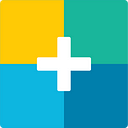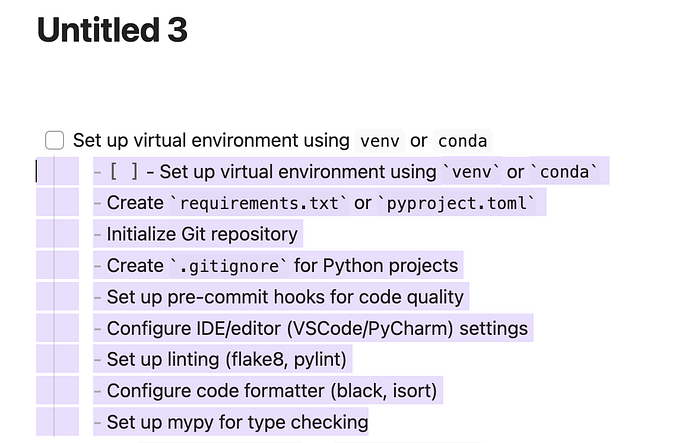WeHealth Is Taking Contact Tracing Beyond COVID-19 While Safeguarding Civil Liberties
With their app, Sameer Halai and his team are building a platform for mitigating infectious diseases that balances public health with personal privacy.

Investors, get a first look at how you can back health moonshots through StartUp Health’s new rolling impact fund.
The Challenge
When COVID-19 burst onto the scene in early 2020, it fundamentally changed how we thought about health. It ushered in a new era of virtual care and normalized telemedicine. It also changed how we think about healthcare privacy and how our personal decisions impact the community around us. It raised a lot of thorny questions, like how can we use technology like smartphones to slow infections without eroding civil liberties?
Today, thanks to the lessons of the pandemic, states and nations are embracing new ways of fighting communicable diseases. We’ve learned that contact tracing is one of the most effective non-pharmaceutical interventions in our toolbox. To make it more feasible, tech giants Apple and Google stepped up with their Exposure Notification Protocol, an API that allows approved apps to share anonymous information about infection exposure.
But even with this new mindset and tools, we’ve seen how contact tracing programs can fail. Some struggle to reach the speed and scale necessary to stop chains of contagion. Some fail because they take a top-down approach and ignore key stakeholders. For instance, Google and Apple might insist on working with a federal agency on a COVID app when public health is handled more locally. In other cases, contact tracing programs don’t align well with end users’ incentives to participate fully. And what happens when tech companies like Google and Apple decide to move on beyond COVID and ignore the possibility that this technology could be used safely to help during flu season? The apps might simply disappear.
Bottom line: contact tracing isn’t a COVID issue. Building a framework for infectious disease detection while working to protect personal privacy and civil liberties is a global health issue of the highest order, and it requires a different kind of sustained leadership and innovation.
These are a few of the challenges being addressed by WeHealth, the company creating a single app solution for exposure notification and public health guidance.
Origin Story
Well before the WHO declared a pandemic in early 2020, James Petrie was hard at work on a whitepaper. A PhD student in applied mathematics, Petrie was exploring what it would take to use Bluetooth proximity detection to create an API protocol that could inform people about COVID exposure while preserving their privacy. This work inspired a band of passionate people spanning tech, public health, and academia, including Sameer Halai, who led efforts to build a product around the API.
In the Spring of 2020, as the Pandemic progressed, James’ whitepaper did the rounds on a volunteer Slack channel and ultimately led to conversations with Apple and Google about a collaborative Exposure Notification Protocol. His work, shared openly online, also sparked similar work from a consortium of professors in Europe, based in Switzerland.
“We did a victory lap that within months, Apple and Google were using our protocol for decentralized contact tracing,” says Halai.
Halai, having co-founded two other impact-focused and VC-backed companies in the past, realized that a lot more investment would be needed to bring the technology to market and to sustain its innovation. So he founded WeHealth as a public benefit corporation. WeHealth was the first in the US to pilot an app, Covid Watch, at the University of Arizona using the API after being the first to receive state entitlement from GAEN. After a successful pilot, in August 2020, the University of Arizona decided to roll out the app as part of a comprehensive strategy to help students return back to campus. The results demonstrated an estimated 11% reduction in the rate of transmission and a 47% rate of adoption among those infected.
WeHealth’s vision is to “innovate at the pace of disease,” says Halai, “by continuously evaluating and improving its platform. We’re also investing in expanding to other diseases as well as new wearable and beacon technologies.”
Since December 2020, WeHealth has co-hosted, with the University of Oxford’s Big Data Institute, The Science of Pandemic Technology Series — the world’s premier exchange of exposure notification technology best practices. They’ve partnered with Doximity, Labcorp, SonoraQuest, and several other labs to build a national API to integrate lab results with exposure notifications. They’ve also collaborated with MIT Lincoln Laboratory and the University of Arizona to evaluate the effectiveness of Bluetooth-based exposure notification.
“We architected this to be one platform for the world,” says Halai. “That’s the missing link.”
Under the Hood
WeHealth has built an app that notifies users that they’ve been exposed to a virus and offers customized public health guidance including access to early testing and treatment. It does this by plugging into the exposure notification API developed by Apple and Google and anonymously detecting when you’ve come in proximity of another person who has been exposed to COVID-19 (or, in the future, another virus). The app runs in the background of your phone at all times using low-energy Bluetooth technology so it doesn’t kill your battery.

One thing that makes WeHealth unique is that the anonymous recommendations a user receives are completely customizable for each community by the public health officials deploying the app, and can be revised instantly as circumstances and resources change.
“One person might get a different suggestion five minutes after you get one because it’s all live. No need to push out updates,” says Halai. “We’re basically a recommendation engine that sits on your device, acting on local data that lives only on your device.”
For the public health official, it’s a simple no-code setup that makes it easy to create if-then scenarios. For instance, if you have high exposure, and if you are fully vaccinated, then here are your recommendations. It’s dynamic public health guidance based on real-time anonymous exposure data. That framework makes the platform location agnostic. Whether it’s a state, country, university, or senior living facility, health authorities can quickly customize the prompts and action items for users falling into different exposure categories.
“We architected this to be one platform for the world,” says Halai. “That’s the missing link.”
The WeHealth app never shares any personal health information (PHI). The underlying protocol is such that the data lives on the device and never leaves unless you choose to send it somewhere.
“We are building leading technology and products backed by science and research that incentivize users to help protect themselves and members of their community.”
Why We’re Proud to Invest
Sometimes in health, having the right technology isn’t enough. You have to have the wisdom to know how to use it, both now and in planning for the future. COVID taught us that we need contact tracing, but we don’t want to be tracked by the government. We want to use our phones for infection control if it helps us get back to our lives, but we don’t want a tech giant to know our every move. We’re proud to back a company that’s taking those significant ethical challenges head-on, while also creating the tech infrastructure to fight future pandemics.
We also love WeHealth because they were born out of a crowded COVID contact tracing market, and that has made them stronger. They’ve responded to advances in the contact tracing market by doubling down and expanding their vision, defining a new sphere of “effective altruism.” Put another way, WeHealth is nimble enough to take the mistakes being made by the tech giants and quickly adapt. Like how Google and Apple’s well-intentioned approach of working with federal agencies led WeHealth to work with smaller clusters of populations, like senior living homes and universities.
“WeHealth has worked to understand the barriers to successful contact tracing from speed and scale to equity and trust,” says Joanna Masel, WeHealth’s head of science. “We are building leading technology and products backed by science and research that incentivize users to help protect themselves and members of their community.”
The future of contact tracing requires thoughtful leadership and a commitment to global equity. WeHealth has collaborated with public health departments, leading scientists, and large corporations because they believe that infectious disease is a solvable problem. They also believe that by focusing deeply on science, privacy, and human-centered design they can build products that are as trustworthy as they are impactful.
We believe Halai has assembled a team that is up to the challenge and we’re excited to see how they shape global health for years to come. Join us in welcoming WeHealth to the StartUp Health family.
Contact Halai and his team at WeHealth via email.
Investors: Learn how you can invest in Health Moonshots through StartUp Health’s new rolling impact fund.
Digital health entrepreneur? Don’t make the journey alone. Learn more about the StartUp Health Community and how StartUp Health invests.
Sign up for StartUp Health Insider™ to get funding insights, news, and special updates delivered to your inbox.











